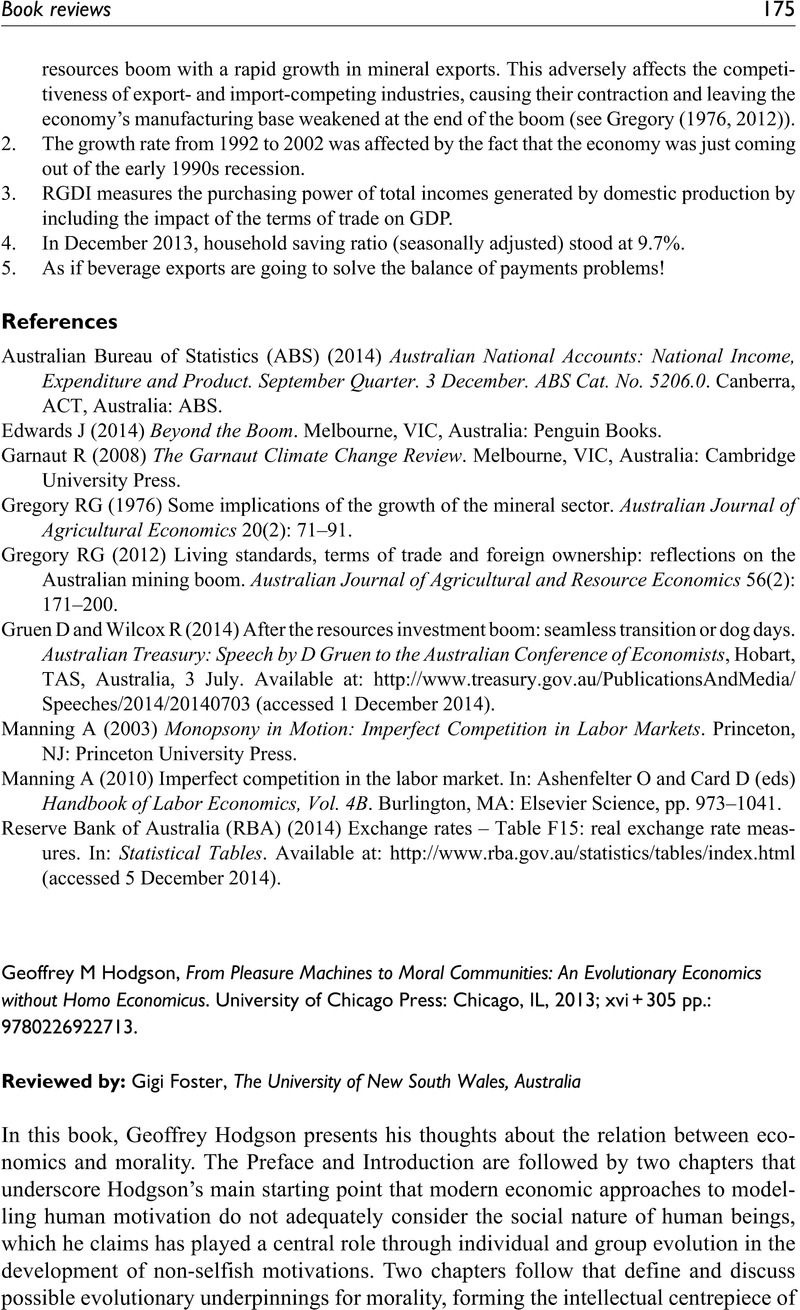No CrossRef data available.
Article contents
Geoffrey M Hodgson, From Pleasure Machines to Moral Communities: An Evolutionary Economics without Homo Economicus. University of Chicago Press: Chicago, IL, 2013; xvi + 305 pp.: 9780226922713.
Review products
Geoffrey M Hodgson, From Pleasure Machines to Moral Communities: An Evolutionary Economics without Homo Economicus. University of Chicago Press: Chicago, IL, 2013; xvi + 305 pp.: 9780226922713.
Published online by Cambridge University Press: 01 January 2023
Abstract
An abstract is not available for this content so a preview has been provided. Please use the Get access link above for information on how to access this content.

- Type
- Book reviews
- Information
- Copyright
- Copyright © The Author(s) 2015
References
Frijters, P with
Foster, G (2013) An Economic Theory of Greed, Love, Groups, and Networks. Cambridge: Cambridge University Press.CrossRefGoogle Scholar
Haidt, J, Joseph, C (2004) Intuitive Ethics: How innately prepared intuitions generate culturally variable virtues. Daedalus 133(4): 55–66.CrossRefGoogle Scholar
Haidt, J, Joseph, C (2008) ‘The moral Mind: How five sets of innate intuitions guide the development of many culture-specific virtues, and perhaps even modules’. In: The Innate Mind, edited by Carruthers, P, Laurence, S, Stich, S. Volume 3 Foundations and the Future, pp. 367–444.CrossRefGoogle Scholar
The Bhagavad-Gita
(2001) Translated by Arnold, Sir Edwin. Vol. 45, Part 4. The Harvard Classics. New York: P.F. Collier & Son, 1909–1914. Available at: http://www.bartleby.com (accessed 9 December 2014).Google Scholar


